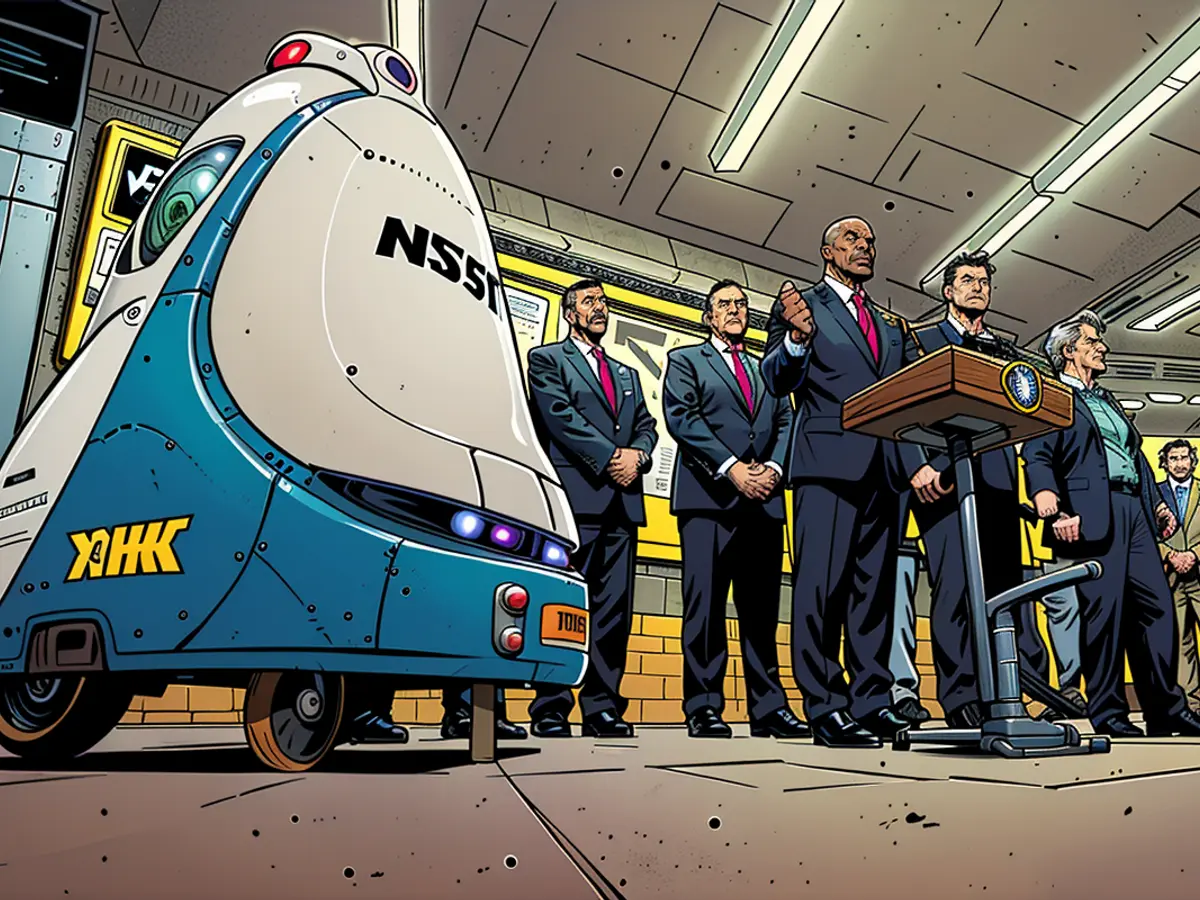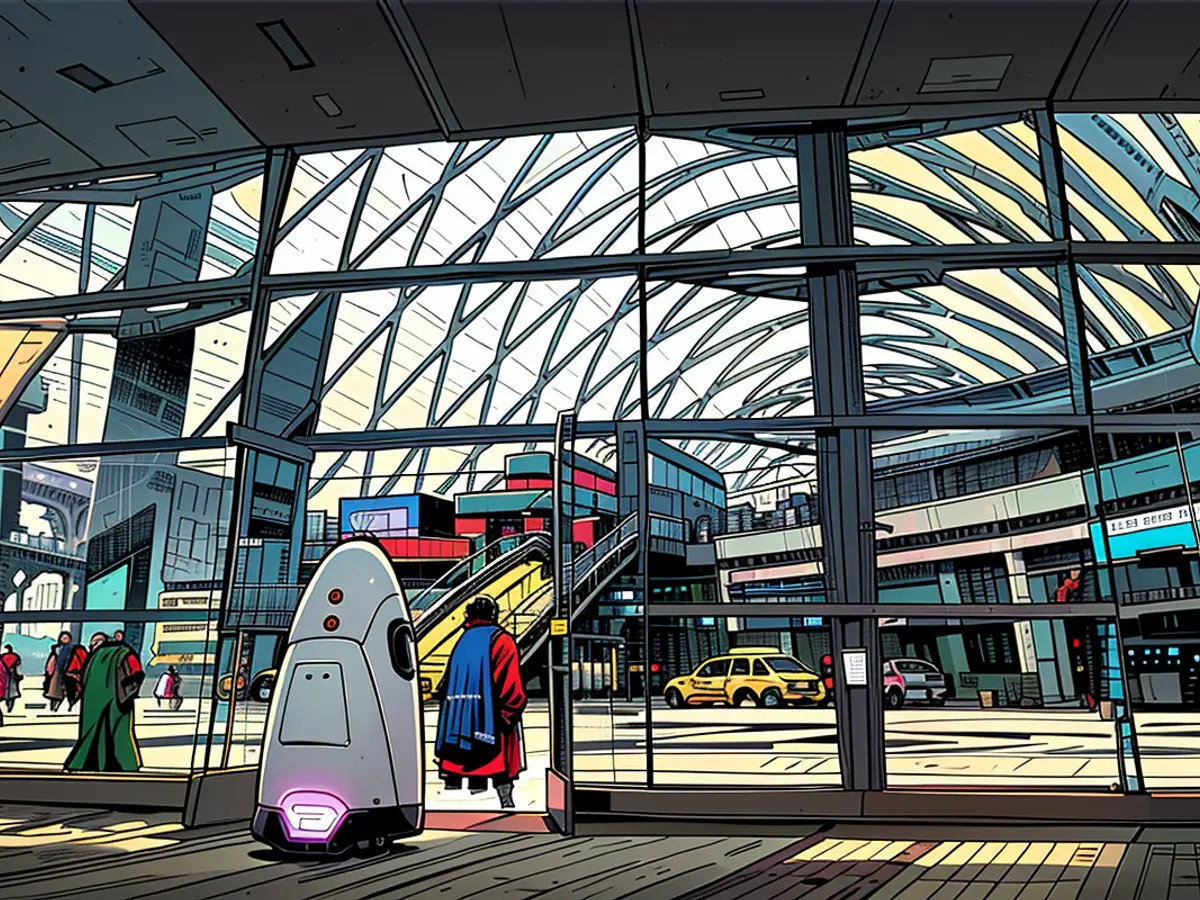Automated security entities are gradually integrating with human security personnel. Gathering information on this subject:
Automated security machines are gaining traction as a complement to human security personnel, leading to debates about privacy concerns and potential loss of jobs in the security sector. Skeptics also question their effectiveness in safeguarding the public.
Demonstrating their worth as a reliable security option is challenging due to the scarcity of public data to back it up. Nonetheless, industry experts and manufacturers argue that their real strength lies in operating in conjunction with security personnel, leveraging advanced technologies.
Here's what we know about automated security machines:
What tasks can they accomplish?
Security robots are endowed with tools that humans lack, making them invaluable additions to security systems:
- 360-degree high-definition video recording
- License plate recognition
- Detection of mobile device signals
- Two-way audio projection and recording
- Motion and physical object detection, combined with collision avoidance
- Environmental detection, such as smoke and carbon monoxide sensors
- Navigation through hazardous environments
Security robots can operate 24/7 and excel at repetitive aspects of the job, like staying at a post or following a set route. Humans benefit from focusing on tasks requiring empathy and sympathy.
The K5 security robot is the most renowned product of California-based robotics and security technology firm Knightscope.
These robots do not have any lethal force capabilities, as mentioned by Knightscope co-founder and Executive Vice President StacyStephens.
Knightscope is not the only manufacturer of security robots. AI and robotics company Cobalt AI manufactures a robot designed for patrolling corridors, offices, and indoor facilities, featuring real-time human-to-human interaction capabilities through built-in screens.
Advanced robotics company Boston Dynamics manufactures a line of robots called “Spot,” which police departments, manufacturers, and construction companies utilize. Its primary objectives include detecting dangerous gases and navigating hazardous environments unsuitable for humans.
Jay Stanley, a senior policy analyst for the American Civil Liberties Union, acknowledged the potential of security robots in performing tasks and navigating hazardous areas that are unsafe for humans.
Where are they being utilized?
Security robots can be spotted patrolling streets in cities like Atlanta and San Diego, among others, and their presence is increasingly being integrated into law enforcement operations.
In 2023, New York Mayor Eric Adams and the NYPD revealed a Knightscope K5 that would patrol Times Square and the city's metro system alongside a police officer.
This February, the NYPD confirmed that the robot had completed its trial run and was subsequently removed from the streets, with no further information disclosed about the reason for its withdrawal.
Earlier this year, Massachusetts State Police deployed a Boston Dynamics Spot during a seven-hour standoff with a suspect in Boston, as reported by CNN affiliate WHDH. The robot endured gunfire while trying to locate the gunman.
Three K5 robots were deployed in San Diego earlier this year, according to CNN affiliate KFMB. One is safeguarding the area of an apartment community in Claremont, providing 24/7 surveillance to protect residents and deter car thieves, as claimed by the robot's operator.
Earlier this month, an apartment building in Atlanta deployed a K5 security robot, as reported by CNN affiliate WANF. It patrols the sidewalks around the buildings to monitor the perimeter and defend residents.
They are not replacing security personnel
John Hassard, a loss prevention and security expert with Robson Forensic, asserts that the core strength of security robots lies in their ability to function as a highly customizable extension of an existing security system.
“One would assume these aren’t entry-level products, so if someone purchases these, they already have a relatively good camera system that they’ve fine-tuned adequately,” he said. “This strengthens that system. It makes the camera system more valuable.”
For example, Knightscope's robots are designed to cooperate with existing security infrastructure and surveillance systems, as mentioned by Stephens.
Knightscope offers security software, which enables the robots to alert security teams when a deviation is detected. Depending on the situation and the sensor used to identify an issue, an alert will be broadcast to the security team or department where the robot is stationed and ask for a guard to investigate the issue.
Robots can also be programmed with various outputs based on the sensors they possess. Robots deployed in a parking garage with license plate recognition capabilities can create lists of license plates to flag and alert to security personnel.
Hassard also believes that security operations may reduce the number of guards required with these devices, provided a location already has effective surveillance infrastructure in place.

“You could cut down the number of security officers employed, replacing them with this,” he said. “By default, this thing doesn’t take breaks, doesn’t sleep, and you know with certainty what its responses will be.”
Serving as a physical deterrent
Experts and a robot manufacturer that CNN spoke to agree on the deterrence capacity of security robots.
“When individuals visit a campus and see a large, 5-and-a-half-foot tall, 3-foot-wide, 400-pound robot with 'security' or 'police' on it, that’s what people start to consider,” Knightscope’s Stephens said.
The robots' ability to act as a physical deterrent can help deescalate situations that may escalate if a police officer were present, according to Paul Scharre, executive vice president at the Center for a New American Security.
“If someone vandalizes a robot and damages it, you have a video recording of them committing vandalism, and you locate and prosecute the individual,” he said. “No lives are lost, no people are harmed during the incident.”
However, Scharre pointed out that robots can also initiate incidents, given their physical presence.
"If these mechanisms are labeled as security or law enforcements bots, they may be seen as invasive and breaching people's personal spaces," mentioned one individual.
However, it's uncertain whether these robots are indeed effective in deterring potential threats, according to another speaker. This uncertainty could stem from companies reluctant to admit initial security concerns, he added.
"Prevention is significant in security, as we aim to stop activities rather than detect them, which is challenging to quantify," he pointed out.
Concerns regarding privacy and civility
Stanley from the ACLU expressed concerns over security robots posing a significant privacy threat to the general public.
"If these robots decide who to monitor based on AI algorithms, it raises major questions about profiling, fairness, and transparency," he claimed.
The opaqueness surrounding the robots' algorithms and intelligence is what worries Stanley. In the event of an unfavorable experience with the robot, there should be legal liability protections in place, he suggested.
"This applies to any AI device, whether it's a robot or simply an algorithm running on software," he mentioned.
Knightscope's robots do not access national criminal databases, and their mobile versions lack facial recognition software, Stephen's clarified. However, their stationary K5 model is capable of using such technology.
The future ahead
As robots evolve and become more advanced, it's crucial to consider how we engage with them, suggested Scharre.
"When deploying security robots, it's essential to consider human interaction with technology, perception, and public response," he advises.
A future where advanced, intelligent security robots capable of automated enforcement and increased surveillance may be an issue that needs to be tackled in the future, Stanley warned.
Although the prospect of security robots patrolling our streets seems like a forthcoming reality, its certainty remains unproven with no substantial track record.
These robots aren't invulnerable to malfunctions or perfectly programmed. In 2016, a K5 knocked over a toddler in a California mall, and the following year, another K5 jumped into a fountain in a Washington, DC, office building.
These malfunctions and the absence of data spark another question. Stanley pondered why any security or police force would opt for robots over conventional choices such as stationary surveillance systems or human security personnel.
"Given other technological alternatives that can perform the job and the capability of human beings to deliver the job, it's challenging to envision these robots being successful in the marketplace anytime soon."
The use of automated security machines like the K5 robot from Knightscope is gaining popularity in cities such as Atlanta and San Diego, with New York City even deploying one in Times Square. However, industry experts argue that these machines should be seen as an extension of human security personnel rather than a replacement, as they can operate 24/7 and excel at repetitive tasks, allowing humans to focus on tasks requiring empathy and sympathy.
Given the reliability and capabilities of these security robots, it's important for us to consider their impact on our jobs as security personnel and our privacy concerns. As US citizens, we want to ensure that these machines are used responsibly and do not infringe on our personal space or freedoms.









